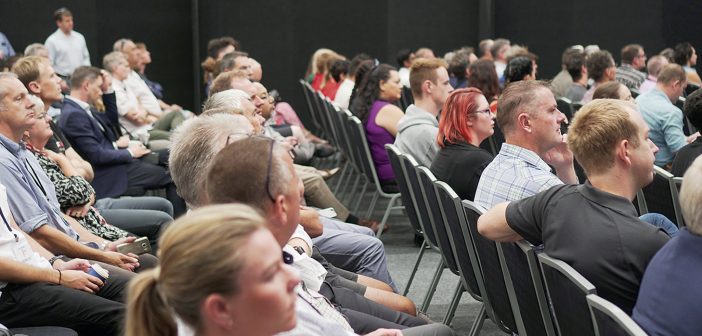By 2040, the internet industrial revolution will have swept through society, transforming much along the way.
That’s why Callaghan Innovation has been crystal ball gazing into the next 20 years, and its chief executive Vic Crone laid down some challenges as keynote speaker at TechFest 2020 at the start of March.
For one thing, the dominant countries in terms of their economies will have a very different look.
“If you look at the top seven economies in 2040, they will be China, India second with the US, Brazil, Russia, Mexico and Indonesia.”
Out go Germany, Japan, the UK and France.
“That means that our traditional areas of trading and how we sell our products and services on the world stage need to fundamentally change over the next decade or so,” Crone told her audience at Claudelands Events Centre. “And that means massive opportunities for innovative Kiwi businesses who are able to pivot and adapt and go into Asia and Southeast Asia with their products and services.”
TechFest 2020 is part of an effort, led by CultivateIT and supported by Te Waka, to build a thriving technology ecosystem in the region.
Described as the largest single-day event of its type in the North Island, the event drew more than 45 exhibitors, and featured more than 35 speakers.
It was kicked off by Crone, whose organisation is a government agency aimed at boosting innovation in New Zealand
When it comes to the future of work, she said 40 percent of tasks will be disrupted through automation, impacting about a million people in the workforce.
“I talk to companies a lot about, where are you sourcing talent from? There’s not enough technical talent in New Zealand to do all the jobs that the technology will enable us to do in the next decade or so. So you need some strategies around that.”
She told her audience that more than half of Stem (science, technology, engineering and maths) graduates come from India and China, with just 10 percent from Europe and 6 percent from the US.
Meanwhile, the next two decades will see New Zealand’s 65-plus population double, while the workforce grows just 10 percent. Around half of the workforce will be Māori, Pacific and Asian, with implications for diversity and inclusion, and getting Māori and Pacific people into the Stem skill areas.
The rise of ethical consumption, veganism and alternative protein choices – with China recently saying it would halve its meat consumption – also opens up a valuable global market.
“So there’s some massive, massive changes that are shaping the world. And all we are saying to you is get across those because there are phenomenal opportunities in there for businesses.”
Smaller firms who are not catching the wave now will find it much harder in three to five years’ time, she said.
She also made a plea for businesses to get internationally connected. “As soon as you’re connected internationally, via investment or multinationals, then your productivity goes through the roof in terms of your innovation.”
New Zealand has too few exporting businesses, she said.
“Essentially it says we are very comfortable in our lifestyles here. We are not connected to the rest of the world when we are New Zealand-owned businesses.
“And over the next 10 to 20 years we will see a number of those businesses drop out as world innovation grows and they simply cannot compete any more.”
New Zealand has also lagged in research and development, with the government set to invest more than a billion dollars in R&D tax incentives over the next four years. A 15 percent tax credit is available for expenditure from $50,000 up to $120 million and those spending under $50,000 with an approved provider will also be eligible, she said.
“The companies that we work with doing R&D have four times the job growth, and four times the revenue growth.”
Crone said the days are gone when businesses can compete individually on their own, citing platforms such as Uber and Airbnb. “Platforms are the way of the future. And you need to be working out: Where is the platform play for your organisation? Where are the partnerships for you?”
Similarly, ecosystems become increasingly important, she said. Callaghan launched a website last year called Scaleup NZ where it is listing technology and innovation startups in New Zealand and connecting them to the likes of investors, incubators and corporates or multinationals who are looking at doing innovation. “The benefit of that platform is there’s 2000 tags in it, it’s got every single technology you could think about.
“It’s about putting it in one place so we can connect the ecosystem and we can move forward as a country.”
She says recent research has indicated it takes a city the size of Sydney to compete on its own in innovation on the world stage. That means the more New Zealand can work together across cities and regions, the more successful it can be in that space. That includes the “beautiful triangle of innovation” of Auckland, Hamilton and Tauranga.
“We’re not here to to shy away from the very real challenges that our country is going to face through the next 10 to 15 years and a massive opportunity that that provides our country when we can galvanise together and embrace this opportunity.”
One of those challenges is the skill base in the workforce. Crone described the skills gap as the second biggest issue facing New Zealand entrepreneurs at the moment, and said the education system is out of sync with where technology is heading.
“We don’t have enough skilled talent capable of moving into positions of greater responsibility, so going into things like artificial intelligence. And there aren’t enough qualified candidates in the workforce,” she said.
“We need our businesses training people in the workforce to make this transition – we don’t have enough coming out of universities.
“So we can’t just look to the education system. We need to go back to things like internships to take people from school into our systems as well.”




